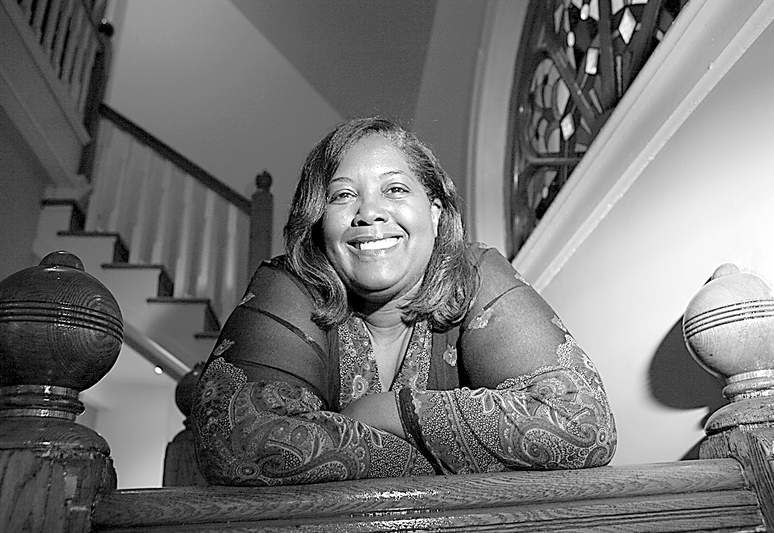When inheriting a home becomes a mixed blessing
Published 5:00 am Monday, September 1, 2008

- Since inheriting her mother’s home in Chicago, Shari Lawrence has discovered that expenses connected to older homes never really stop coming.
CHICAGO — For most people, inheriting a house would be a big economic leap forward.
But for people such as Shari Lawrence, being given an old house in a dicey neighborhood can be as much millstone as cause for celebration.
Lawrence felt incredibly fortunate when her mother gave her a 115-year-old Queen Anne-style Victorian in Chicago’s mid-South Side Oakland neighborhood, an area with plenty of board-ups and vacant lots. She quickly discovered that rehabbing in a rough economy carries its own set of risks, including job insecurity, even without down payments and brokers’ commissions.
Her story is typical of many homeowners, but African-Americans face an extra set of obstacles.
Homes in minority communities are worth about 20 percent less than comparable dwellings in white areas, and they appreciate at a slower rate, according to a Brookings Institution study in 2001. It’s a phenomenon dubbed the “segregation tax” by Brandeis University sociologist Thomas Shapiro, who argues that these factors help explain statistics showing black Americans have 10 cents of wealth for every $1 of white Americans.
Many older African-Americans are house rich but cash poor, one reason black neighborhoods were prime targets of subprime lenders and foreclosure rates in minority communities are far outpacing those in white ones. When African-Americans lose a home to foreclosure, it is often a trap door out of the middle class.
“Home equity is the greatest reservoir of wealth American families have,” Shapiro said in an interview. “Homes are a very special kind of wealth. It’s not like a diamond, which you don’t have to replace. You have to replace where you live.”
State of disrepair
“People who bought houses in the ’60s are really in trouble today,” said Annette Conti, executive director of the Historic Chicago Bungalow Association. “They’re paying such high amounts for utilities. Most of these houses don’t have an inch of insulation.”
They need lots of other things as well.
“We have five holes in the roof. It rains in the living room. It rains on the porch. It’s a nightmare,” said Valerie Pendleton, who lives with her brother in a bungalow that was purchased by her parents in 1961 and passed down after her mother died in 2001.
“We need a new furnace, water heater, plumbing and electrical work. We need cabinets. The stairs are so old; there might be termites. The foundation has to be redone. The basement floor is buckling.”
Fortunately, Pendleton’s bungalow has been certified by the city, which qualifies it for energy-saver grants from the bungalow association of up to $2,000 to pay for insulation, new furnaces and air conditioning systems. Homeowners with limited incomes can qualify for additional grants of $3,000 to $5,000.
But she realizes the bill for all the work will probably top $100,000, so Pendleton, 51, is hoping to find other grants. She also plans to reach out to local trade schools to see if students in the construction trades might take her house on as a project.
Sell or repair?
Yet for most owners of aging homes, there is no financial assistance at all, or what is available is a drop in the bucket compared with what needs to be done.
“A lot of older people have died, and their children can’t afford to take care of the property. There are some who already have lost their place,” said Gerald Earles, a 76-year-old, who along with his wife, Lorean, has spent a decade renovating a greystone two-flat that he inherited from his mother. “They didn’t have the money to work with. They didn’t see what they already had and weren’t able to hold on to it.”
Some of these next-generation owners succumb to low-ball offers from speculators who buy their properties for a fraction of what they might be worth if they were in good repair.
Earles’ advice: Don’t borrow money to renovate. Wait until you have the cash and pay upfront.
A home with history
It was 2001 when Lawrence’s adventure as a homeowner began, but her family’s connection to the 4100 block of South Lake Park Avenue dates back almost 70 years, when her great aunt, Fern Gayden, purchased a home around 1940.
Gayden, a social worker by profession, also was an aspiring short-story writer and poet. In the 1930s, she had become an influential member of the now-famous South Side Writer’s Group founded by Richard Wright and Margaret Walker, two of the 20th century’s best-known black writers. The group held many meetings in Gayden’s cottage, and during World War II she published a literary magazine, “Negro Story,” from her house.
Gayden died in 1986. Her sisters and brother continued living in the cottage until the last one died in 2001. The house had been left to Gayden’s niece, Frances Lawrence, who had her own home in Chatham. Her daughter, Shari Lawrence, a technical writer with a degree from William Penn University, asked her mom if she could have the house. Her mother quit-claimed it to her.
“I thought, ‘Shari will have a home of her own, and I will be sure she is doing OK before I pass away,’” Frances Lawrence said. “Shari will always work and pay her bills. She writes everything out and plans everything. She just doesn’t up and do anything on the spur of the moment.”
Finding financing
Lawrence hired the Chicago residential architecture firm Burns + Beyerl to draw up plans for a gourmet kitchen, three bedrooms, including a master suite with a cathedral ceiling, and 2 bathrooms.
She loved the designs, which cost her about $10,000. But then she lost her job at Click Commerce, a software dot-com, and had to put everything on hold. A month later, she landed at Anexsys, a Bank One joint venture that developed software to handle electronic government-tax payments.
Chastened but undeterred, Lawrence picked up the plans a few months later. Her architects were blunt: They said she could not afford to work with any of the contractors who regularly bid on their jobs. Lawrence would need to find her own contractor.
She did. Lawrence saw Goldberg General Contracting’s name in a Chicago magazine article. She left a message asking if they would recommend a less-expensive firm.
Jeff Berry, Goldberg’s vice president, called back and asked, “How do you know you can’t afford us?” At about $250,000, Lawrence’s project was about half the size that Goldberg preferred, but Berry saw an opportunity to get a foot in the door with Burns + Beyerl.
He showed up at a meeting between Lawrence and her architects about what was in the budget. Granite countertops were out, she was told. There wasn’t enough money to redo and insulate the home’s deteriorated facade.
As they walked out of the meeting, Berry told Lawrence, “Don’t worry. I’ll find a way to get you the granite countertops.”
“She came off as being very sweet, honest and nice. If she hadn’t been, I probably would have passed,” Berry said. “She was great in the process. She asked for help in every phase. If I had to do a little freebie here or there, it wasn’t a problem.”
A work in progress
Four years after her gut-rehab was substantially finished, there are still holes in the ceiling with dangling wires where light fixtures should hang. Woodwork on the second floor needs to be stripped and painted. Other trim has never been stained or varnished. Her living room has no couch or chairs, and her bedroom is bare except for an ironing board and a mattress on a metal frame.
Expenses connected to older homes never really stop coming, Lawrence has discovered. Last year, it was $12,000 to rebuild old chimneys. A $6,000 estimate to bring her fireplaces up to code sits on the kitchen island. She won’t be doing that this year. She may never have the tens of thousands of dollars that it would take to redo her home’s facade.
In late 2006, Lawrence changed jobs again. This time it was her own idea. She now works for HSBC, one of the world’s largest banks, writing procedures for mortgage lenders.
She has no credit card debt but says she is still afraid of spending money.
“I don’t have everything I want, but I have everything I need. I’ve been given a fantastic gift from my mom, and I need to take care of it. As long as I have a job, I’m fine.”






